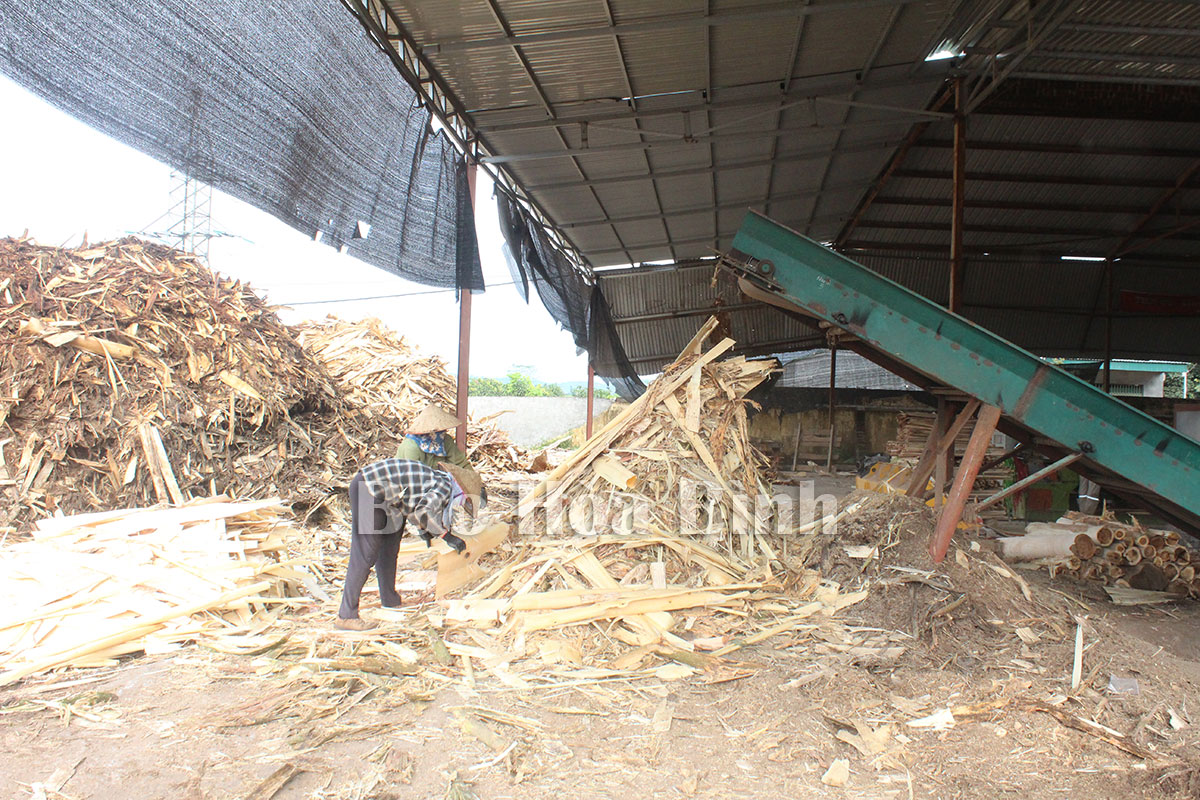
(HBO) - In recent years, in addition to the development of agriculture and the cultivation of citrus fruit trees, positive changes have also been seen in industry and handicrafts in Tan Lac district. Many new enterrises and production facilities have been established, thereby optimising the potential and advantages of the locality, creating many jobs with stable incomes for local labourers.

Hong
Gia Bao JSC in Dong Lai commune processes forestry products, contributing to
the local economy
Within
the first six months of 2021, total production value of industry and handicrafts
in the locality reached 538.76 billion VND. Main products are construction
stone, bricks, electricity, running water, among others.
In attracting investment, a number of projects are in
the process of preparation for investment in the district, such as the Supertex
Knitting Factory (total investment of 8 million USD), and a factory
manufacturing wooden boards, plywood and chips for export in Phong Phu
industrial cluster (75 ha).
In order to develop industry-handicraft production in
the locality, in mid-June, a delegation of the provincial People’s Committee
held a working session with Tan Lac’s People’s Committee on developing industry-handicrafts,
services, transportation, and budget collection. The delegation also inspected the
development of industry-handicrafts in the locality under the policy of building
industrial clusters and promoting investment attraction for sustainable development
of industry-handicrafts.
According to Bui Van Nho, Chairman of Tan Lac People’s Committee, the district
will tap into local strength and advantages and mobilise external resources to
develop industry-handicrafts in the direction of improving production capacity,
productivity, product quality and competitiveness.
The district will gear the development of industry-handicrafts
in the direction of concentrated and synchronous commercial production in
association with the planning of cultivation areas for citrus fruits,
sugarcane, vegetables... to form production value chains. Attention will be
paid to building and developing trademarks for advantageous agricultural and
forestry products, and developing traditional craft villages to meet OCOP
standards in connection with tourism development.
The district will also develop the construction material industry in accordance
with the provincial construction material development planning, with a focus on
un-baked materials.
Infrastructure for industry-handicrafts will be developed in the direction of
improving quality, competitiveness, green, safe and modern production./.
Administrative reform has been identified as a key priority in enhancing state governance, improving the business environment, and facilitating services for citizens and enterprises.
The Standing Board of the Hoa Binh provincial Party Committee met on March 18 to review and guide major investment projects aimed at boosting local socio-economic development.
The air is thick with the hum of drills and the clatter of machinery as the Hoa Binh – Moc Chau expressway takes shape amid the rugged terrain. Welding sparks illuminate the faces of workers, and concrete mixers churn relentlessly, laying fresh pavement on the newly-carved road. The construction site buzzes with a palpable sense of urgency, particularly in Hoa Binh province where the expressway's future is being forged.
The northern province of Hoa Binh, with over 467,000 hectares of natural forest and more than 100,000 hectares of production forest, holds significant potential for carbon credit market development.
Replacing substandard houses with more sturdy ones by June 30 is the direction given by Nguyen Phi Long, alternate member of the Party Central Committee and Secretary of the Hoa Binh provincial Party Committee, at a meeting held in early March by the provincial Steering Committee for the programme to eliminate temporary and dilapidated houses for the needy.
Recognising digital transformation as an inevitable trend, authorities and agencies in Hoa Binh have made great efforts in the work by focusing on three core pillars - digital government, digital society, and digital economy, resulting in enhanced competitiveness, improved investment climate, and ensured economic and social welfare.



